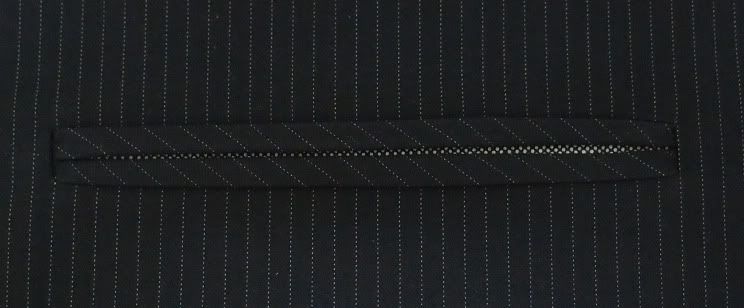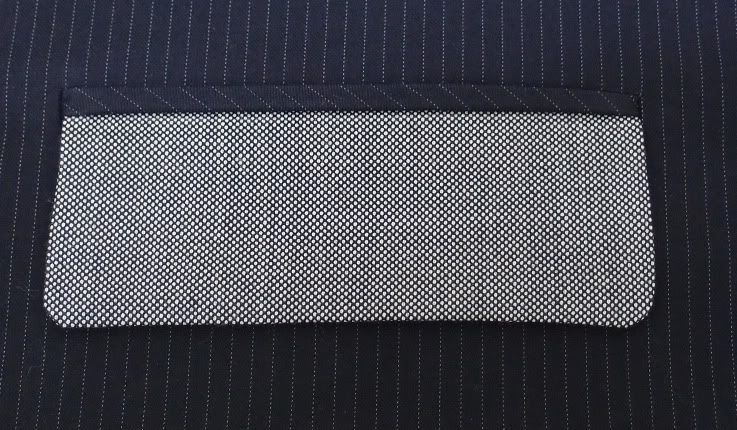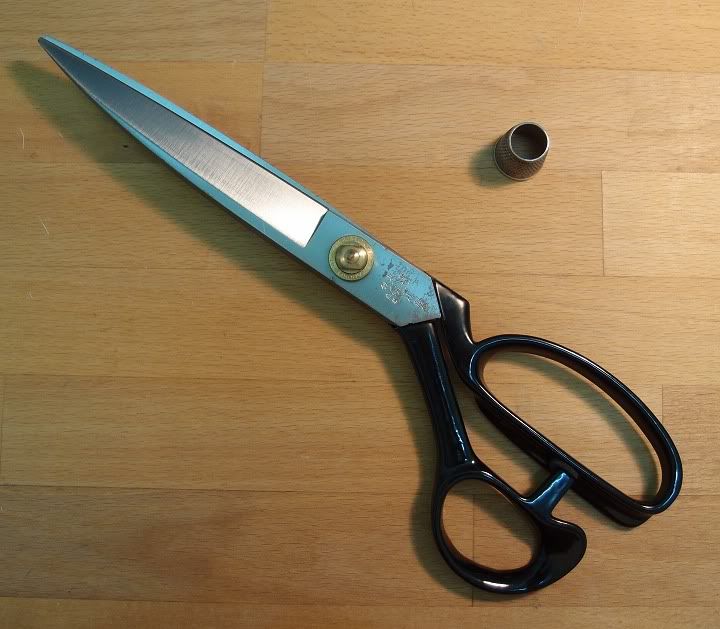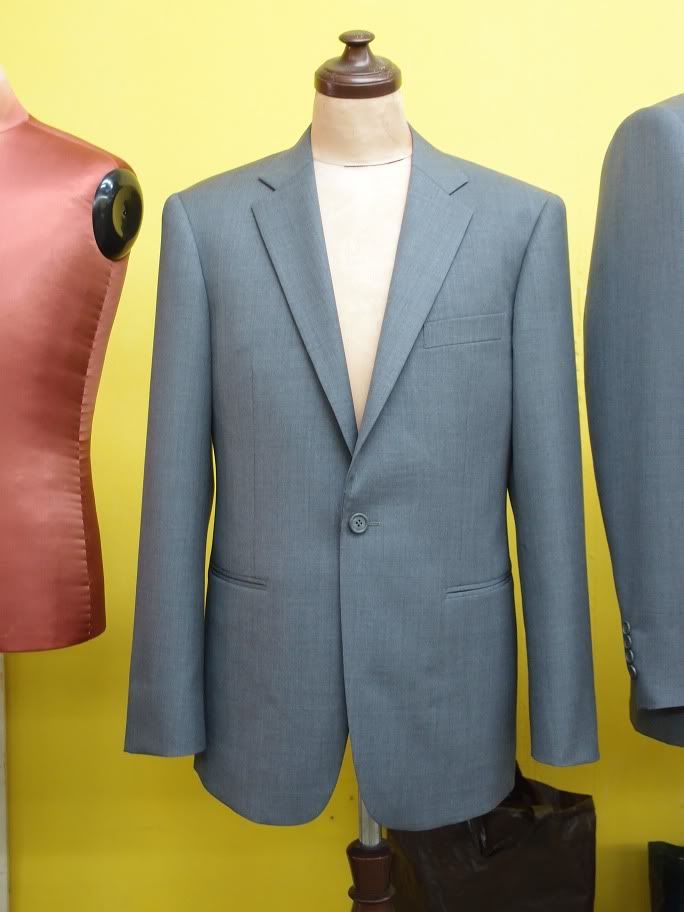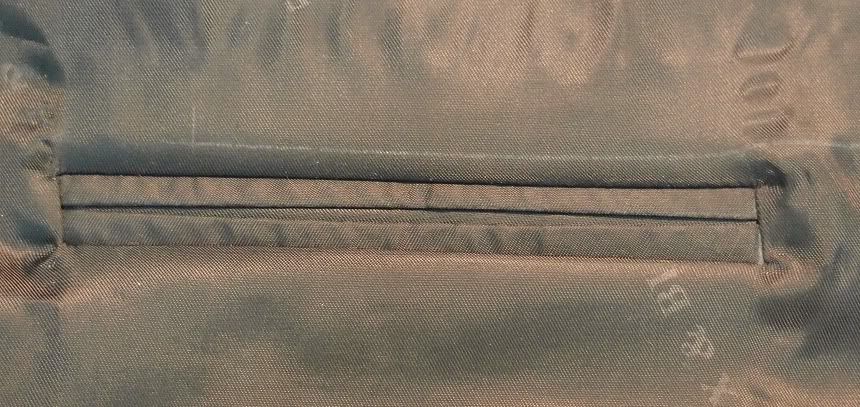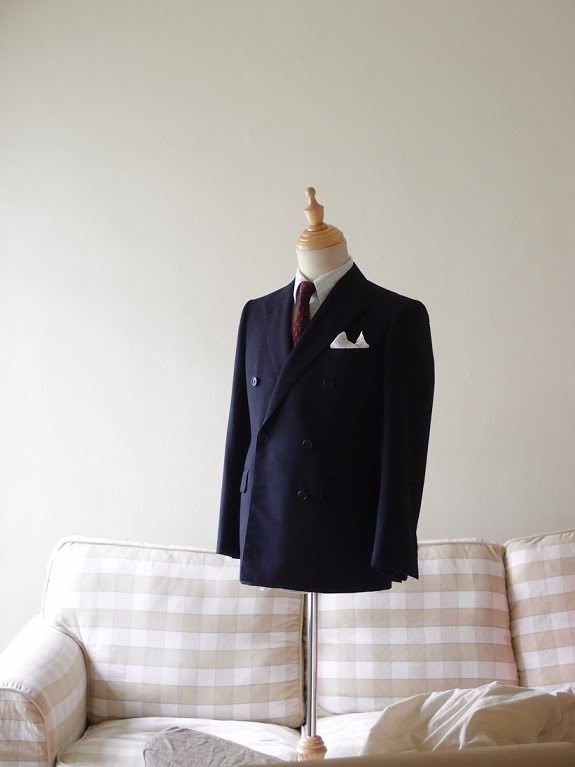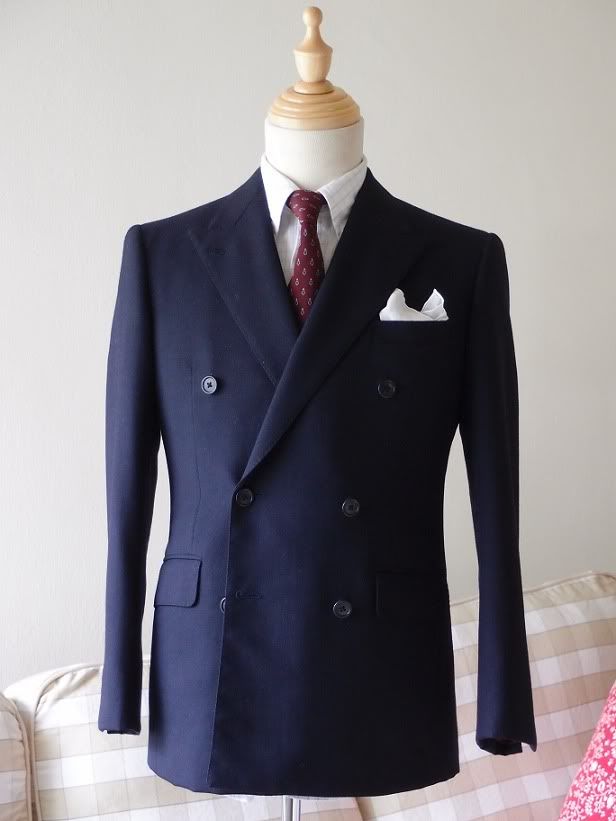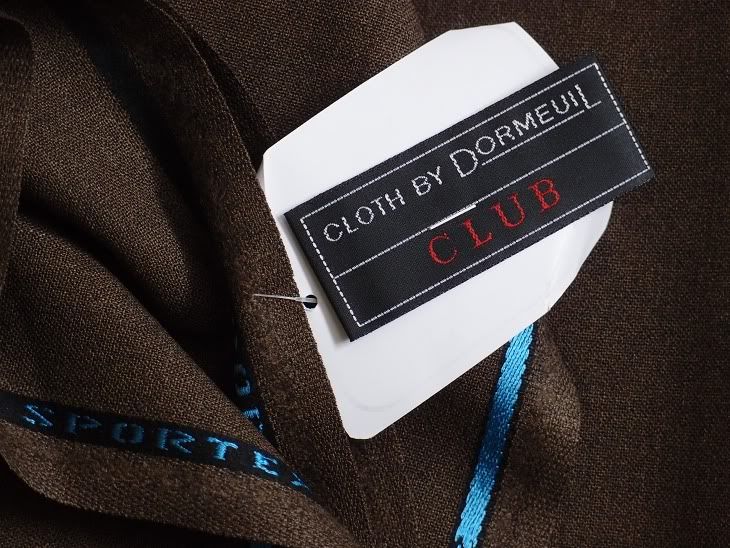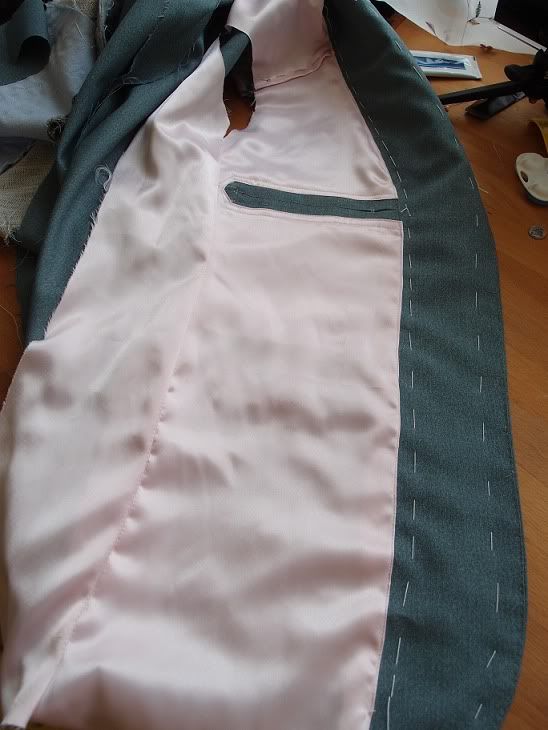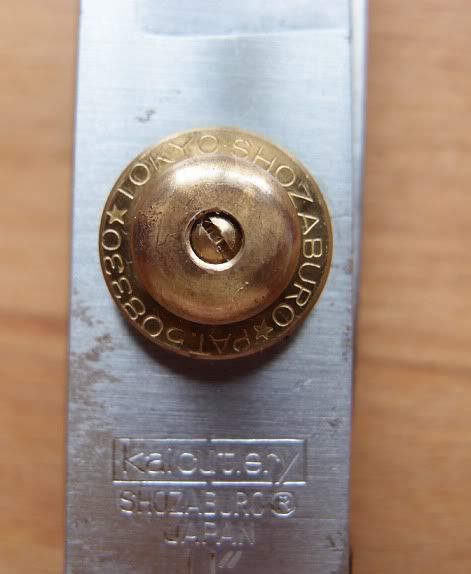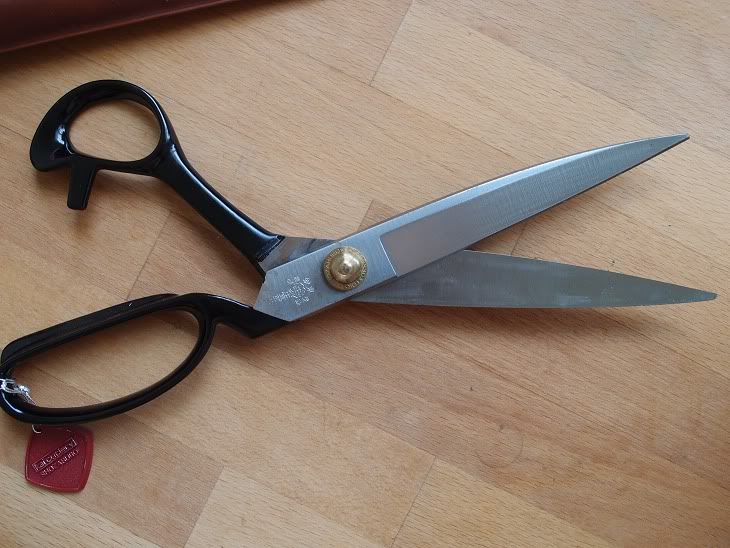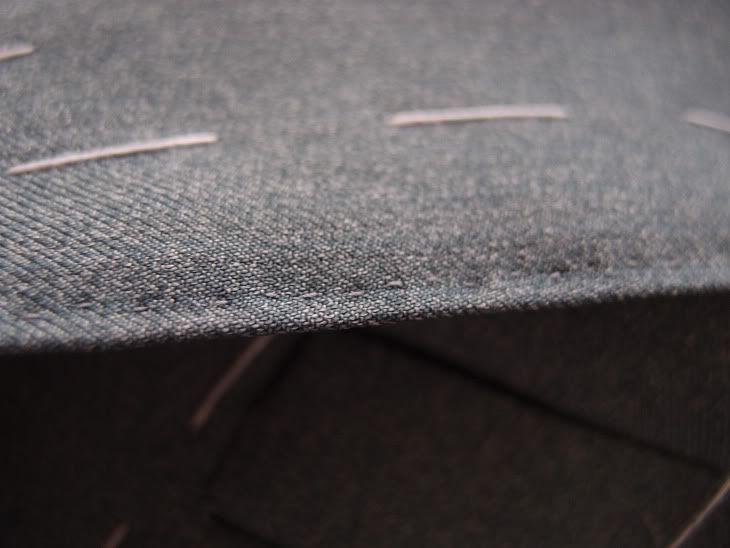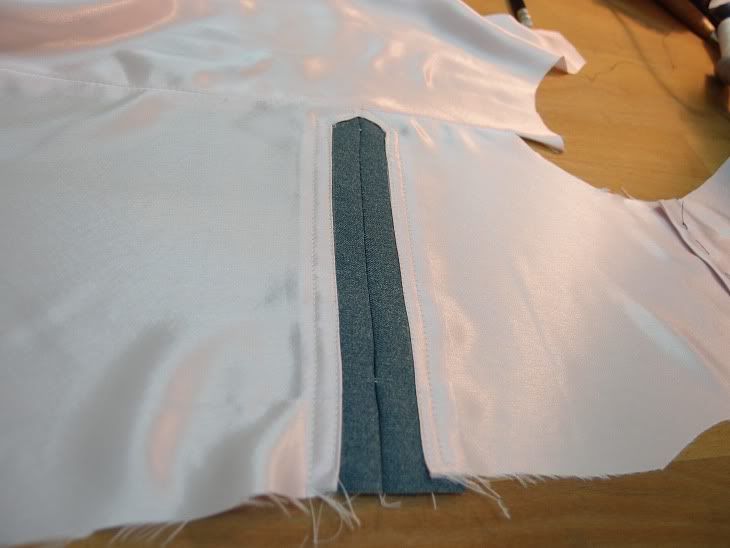I plucked up the courage and went to MBT today to pick up some clothes and to show him TG#4. I took out TG#4 and put it on his table. He had this bemused expression on his face as he poked at it.
"You sewed this?" he asked. I said yes.
"Who drafted the pattern for you?"
When he heard that I drafted the pattern myself after having taught myself how to from an old German text, his face became dead serious.
"Buffalo horn shoulders," he remarked. He went to a mannequin and took off the display jacket and draped TG#4 over it.
"See, the collar is pulling away," he said as he pinched the collar and it readily separated from the mannequin's neck. "The back is pulling the fronts away towards the back." I said yes, the front balance was long but did not agree with him about the collar pulling away.
I was surprised and disappointed that he would do a fit critique with the garment on a mannequin. After all, it was cut for me, not a mannequin.
He pinched about 3/4" between his fingers at the shoulder seam near the neckhole. The quarters closed.
"You can take it up at the shoulder seam. When you do that you need to drop the lapels by the appropriate amount and lengthen the hem. The other option is to take out a gorge dart. Another way is to draw the bridle."
I wanted to tell him that I have already drawn the bridle, and taking out a deep gorge dart on top of the tight bridle would probably make for a very concave lapel crease edge. But I did not because he was criticizing the sewing next.
"Is this the first time you have sewn?" he asked. I said yes. I know that the quality of the sewing is probably the weakest aspect of TG#4.
"See how this seam here wasn't sewn smoothly. It's better on this side." At this juncture his wife joined us. She said the sewing is bad, but for the first jacket and the first use of a sewing machine it is considered good.
I told him how much effort the cross pockets took. "You need to press the seam here open," he said. I was not too interested in hearing his views about pockets because I followed Cabrera to the letter on this and all other methods of constructing pockets are pretty much inferior. "And you always need to tack the pocket ends, otherwise they unravel very quickly," he said.
I said I intended to do a D-tack.
"A machine tack is OK too," he told me.
He took off TG#4. I offered to put it on and did so.
There was a marked change in his expression. He was surprised. It was then that I realised something. He had thought all along that I have used a generic pattern that is proportional. What he saw now was that the jacket was fitted to me and wasn't just cut from a ready-made pattern.
He has a certain look now to his face that I cannot decipher. His eyes were looking at the waist.
"Yeah I know it is very waisted," I said. He didn't say anything.
His eyes wandered to the armpit area. Seeing this, I raised my arms to help him see the side body.
He turned me around and started looking at the back. He looked without saying anything. I broke the silence by saying that I had budgeted wrongly for the back hem inlay because there is scarely enough there.
"The back is short," he remarked and retired to his chair.
I took off TG#4 and while I was doing so he went rummaging in his workshop.
"I have something to give you. You take it home, inspect it, then tell me what you learn," he said as he handed me a black collar felt that was a reject from a jacket. I held it and he grabbed it back. He laid it over TG#4's collar.
"This is how a collar should be like," he said. I asked if there was something wrong with my collar.
"Yes, it should be such that you can just sew this end to the lapel," he replied.
Relieved, I told him that my collar is oversized and have generous inlays and that I will trim it to size after the pad stitching.
"The jacket is OK for someone not from the trade," he pronounced.
